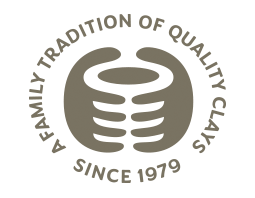Measures to keep yourself and others safe while working within the studio.
Silica has been a long-standing health hazard since stone masonry and ceramics began. The risk arises through the inhalation of dust containing crystalline silica. Silica remains an important risk factor for respiratory disease.
Long term exposure to respirable silica dust may cause lung disease, commonly referred to as Silicosis.
Keane Ceramics is continuously reviewing and updating their safety information in line with Australian WHS Legislation and Regulations, and we have our Safety Data Sheets available on our website.
We recommend your workplace is using a combination of the “hierarchy of control measures” in managing silica dust, such as
-
Do not eat or drink whilst working.
-
Wash your hands thoroughly before eating and going to the bathroom.
-
There should be adequate ventilation in line with WHS legislations and when possible, all dusty work, including the spraying and mixing of glazes and slips, should be done in a suitable dust extraction compartment with filtered exhausts to the outside atmosphere.
-
Clean as you go (before the clay becomes dry and dusty) we advise to regularly wipe down work benches with a wet sponge.
-
Working surfaces, walls and floors should be thoroughly cleaned after use preferably by a wet method or with an industrial vacuum unit that meets Australian safety standards.
-
Wear suitable PPE, preferably Australian Standard approved when handling clay dust. We recommend P2 Mask, gloves and apron.
-
The following materials need particular care when handling: barium carbonate, silica and powdered raw materials in particular silica, feldspars, copper carbonate, oxides, lead bearing glazes and all on-glaze colours.
-
When leaving the studio always wash your hands

